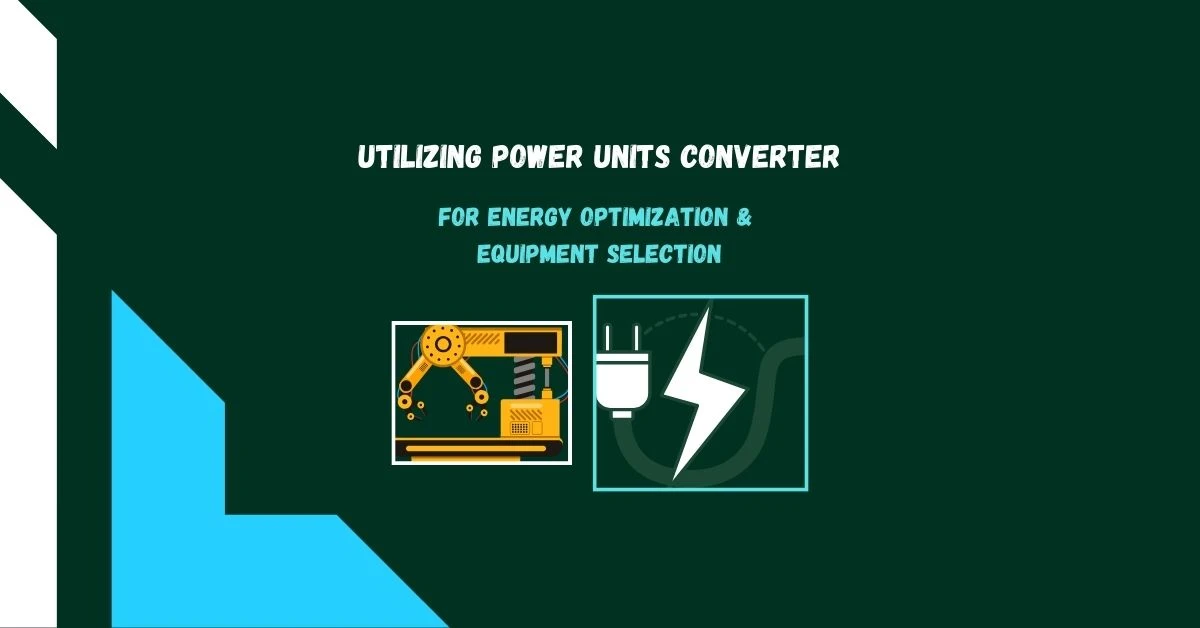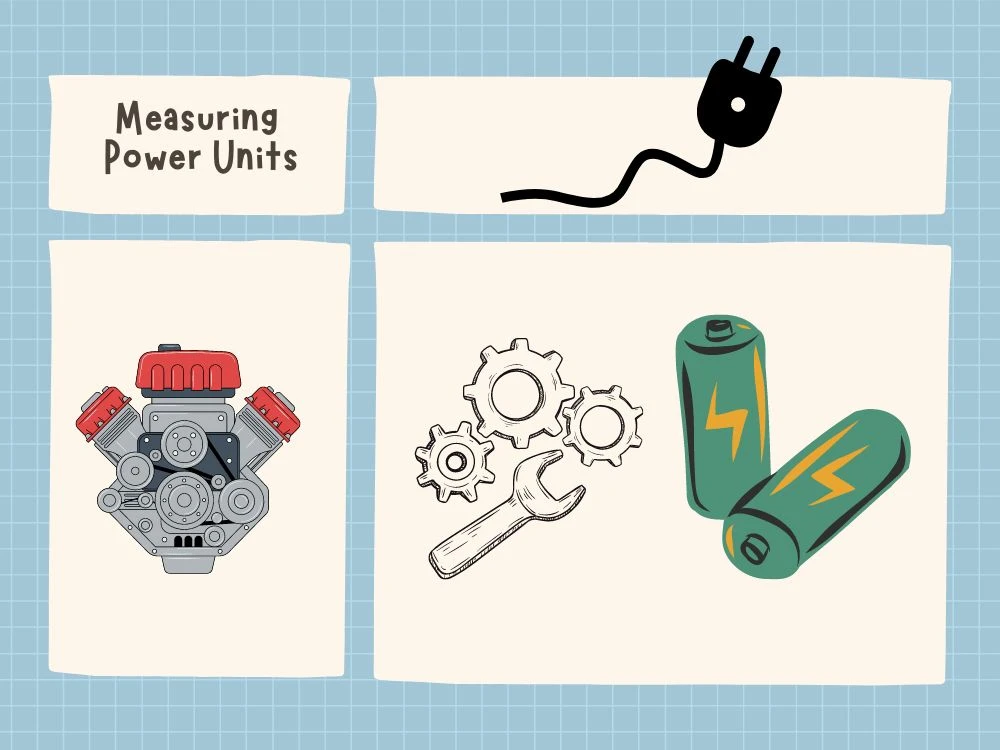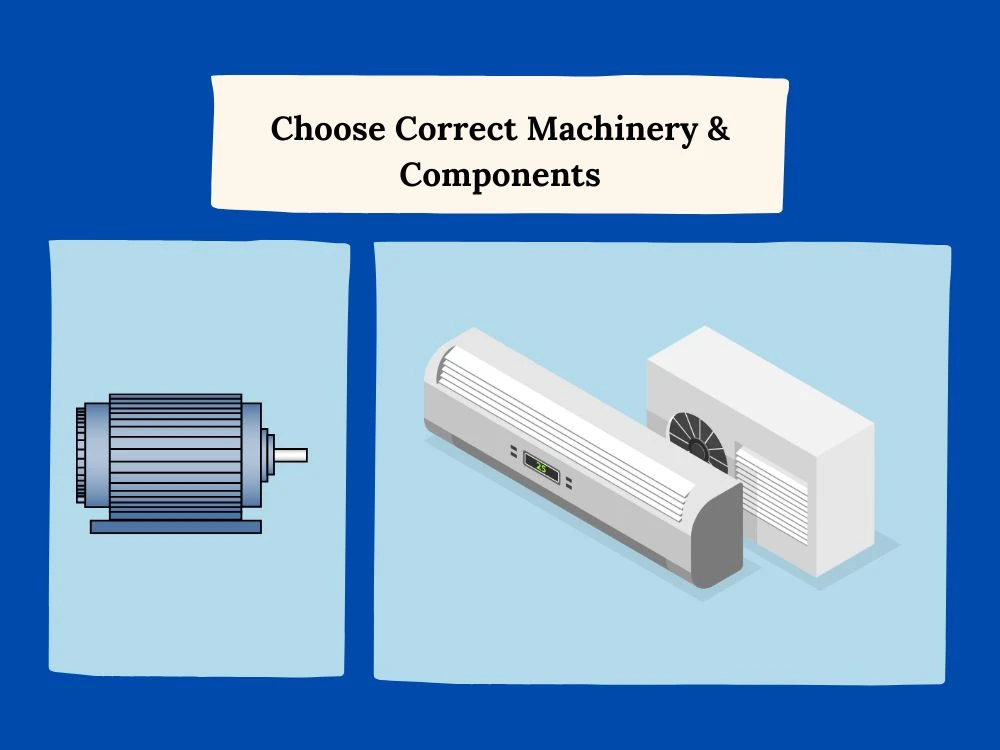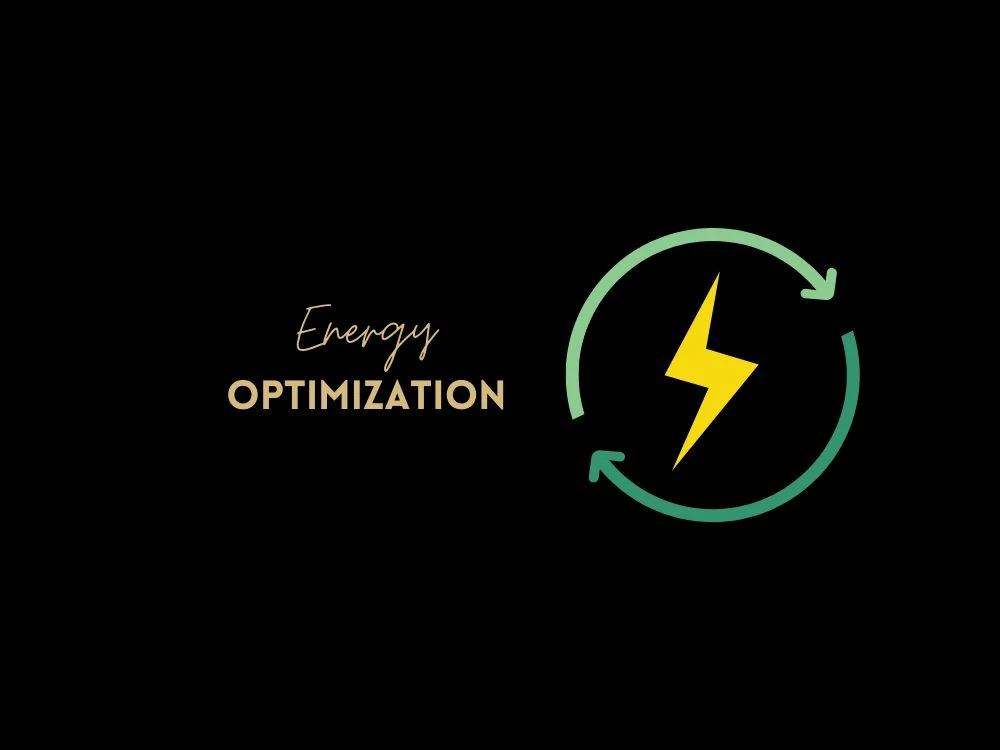
Utilizing a Power Converter Tool for Selecting Industrial Machinery and Enhancing Energy Optimization
If you are a business owner or working in a business firm, you must know the importance of selecting the right machinery, equipment, and components. If you see, irrelevant machinery and equipment selection may lead to significant energy losses.
Energy optimization is one of the primary tasks in an organization which helps optimize energy usage in the right amount. It prevents energy wastage and high utility bills that recur. Choosing the right machinery, equipment, and components is important to ensure energy optimization.
A power converter tool helps convert multiple power units accurately. This is so helpful to identify the power value in different units. When procuring machinery and components, a business owner or relevant staff should see the power value to identify how much that will cost to the energy bill. Meanwhile, they can utilize the power converter tool to procure the right machinery or components.
Key Takeaways
- Understanding the power converter tool, different power units, conversions, and its uses.
- Learn how to select industrial machinery and components using a power converter tool.
- Understand energy optimization and the utilization of a power converter tool for this purpose.
- Learn methods of energy optimization with examples.
Understanding the Power Converter Tool

What is a Power Converter Tool and How It Works
A power converter tool like the one we offer at Smart Tools AI simplifies power unit conversion. In industries, different power units are used for different purposes. For all requirements, engineers, and other industrial employees need quick and accurate conversion.
The tool is efficient in converting one power unit to another instantly and accurately. This is crucial to quickly identify different power units. Also, this helps in the right machinery selection and energy optimization in businesses.
Overview of The Various Units Supported by The Tool
Different countries and industries use different power units for energy calculation and machinery selection. Based on this aspect, the Smart Tools AI power converter tool offers almost every power unit conversion like the ones listed below:
- BTU (SI)/hour: British Thermal Units per hour - This unit of measurement for heat energy is generally used in heating, ventilation, and air conditioning (HVAC) systems to evaluate the cooling or heating capacity.
- BTU (thermo)/hour: This is another variant of British Thermal Units per hour which is mostly used in thermodynamics to measure the rate of heat transfer.
- BTU (thermo)/minute: This unit indicates the rate at which heat energy is transferred and is useful in industrial processes and thermal engineering.
- BTU (thermo)/second: Measuring the rapidity of heat transfer. Also, crucial for assessing the efficiency of heating or cooling systems in real-time scenarios.
- Calorie (thermo)/minute: Calories per minute - A unit of heat energy used in scientific and engineering contexts. It helps quantify heat generation or absorption over time.
- Calorie (thermo)/second: Calories per second - Indicates the rapidity of heat exchange. It is particularly relevant in dynamic systems where quick responses to temperature changes are required.
- Erg/second: Ergs per second - A small unit of energy used in physics and engineering that is useful for accurate measurements of mechanical work or energy flow.
- Foot-pound force/hour: Foot-pounds per hour – This unit measures mechanical work or power over time. Commonly encountered in mechanical engineering applications.
- Foot-pound force/minute: Foot-pounds per minute - Indicates the rate of mechanical work or power output. This is relevant for machinery selection and performance evaluation.
- Foot-pound force/second: Foot-pounds per second measures the instantaneous mechanical power or work output. This power unit is used to assess the machinery's performance.
- Horsepower (UK): A unit of power that is equal to 550 foot-pounds per second. This unit is used in industries such as automotive and manufacturing in the UK for rating engine power.
- Horsepower (boiler): This particular unit of power is used to rate the capacity of boilers to generate steam. This unit is important in industrial processes and power generation.
- Horsepower (electric): Electric horsepower measures the power output of electric motors which is vital for selecting motors and assessing electrical system efficiency.
- Horsepower (metric): A metric unit of power equivalent to approximately 0.98632 mechanical horsepower. This unit is commonly used in countries following the metric system.
- Horsepower (550 ft lbf/s): Mechanical horsepower which is derived from the definition of one horsepower as equivalent to 550 foot-pounds per second, used in various engineering applications.
- Kilocalorie (thermo)/min: Kilocalories per minute measures heat energy transfer over time. This is useful in industrial processes, and energy management.
- Kilocalorie (thermo)/sec: Kilocalories per second indicate rapid heat transfer rates. This unit is relevant for assessing thermal dynamics and efficiency in heating or cooling systems.
- Kilowatt (KW): A most common unit of electrical power equal to 1000 watts. Commonly used in energy calculations, machinery selection, and electrical system design.
- Megawatt (MW): A unit of power equal to one million watts or 1000KW. This unit is used to measure the capacity of large power plants or industrial machinery.
- Milliwatt (mW): A unit of power that is equal to one-thousandth of a watt. This is useful for measuring low-power devices or electronics and for precision energy calculations.
Most Common Power Conversions in Industrial Settings
In industrial settings, power conversion is necessary for various purposes. Whether it is for energy optimization, machinery selection, or any other engineering and industrial applications, the following power conversions are useful and mostly used:
i) Kilowatts to horsepower (KW to HP) - This is known as one of the most common power unit conversions. Industries utilize this conversion method to evaluate the power of engines, motors, and machinery outputs.
For example, a piece of machinery in a production plant is identified as 75KW in power. To assess the power in HP that the machinery exactly produces, the power converter tool is used which converts the amount to 100.58HP.
ii) British thermal units to kilowatts (BTU to KW) - This is another crucial conversion in industrial settings. Most commonly used in HVAC systems.
For example, a split AC system rated at 12000 BTUs and to assess the equivalent cooling capacity in KW, the power converter is used. The conversion of 12000 BTUs per hour equals 3.52KW.
iii) Megawatts to Kilowatts (MW to KW) - This conversion is necessary in large industrial buildings.
For example, a hydropower electricity generation industry produces 25MW of electricity converted to KW to identify the power output generated in KW. It equals to 25000KW.
iv) Horsepower to foot-pounds per second (HP to ft-lbf/s) - This is also a common power unit conversion in industries.
For example, in an industrial manufacturing plant, an engine with a power output of 120 horsepower (HP) is used to drive a conveyor belt. The horsepower rating is converted to determine the torque produced by the engine. This results in approximately 66000 foot-pounds per second of torque.
Several other common power unit conversions take place in industries. The ultimate objective is to assess and evaluate the machinery performance, power consumption, and energy efficiency and to plan energy optimization and other related tasks.
Selecting Machinery and Components

Importance of Selecting the Right Machinery and Components for Industrial Operations
Selecting the right machinery and components for industrial operations is essential to save energy and complete work efficiently. When choosing industrial machinery and components, firms require certain power unit conversions.
In an industrial building, there can be several machinery and components related to MEP (Mechanical, electrical, and Plumbing) services, production, power tools, and so on. These things come up with specific power values. A power converter tool helps identify the power value that is appropriate to certain industries and geographical locations.
For instance, HVAC systems are mostly rated in BTUs and to identify the power value in KW, the industry should use the power converter tool. This will help evaluate the unit rate of electricity easily where KWH is the standard energy evaluation method.
Examples of How the Tool can Assist in Machinery and Component Selection
Industries use different power evaluations for different purposes. The power converter tool helps perform the right machinery and component selection. Here are some examples:
- Automotive Industry: An engine is required for a motor car and when purchasing the engine, the industry professionals need to convert the horsepower to kilowatts. Here they can able to identify the power value in KW which helps them select the correct engine for the car.
- Manufacturing Industry: A purchase of a motor for the conveyor belt which requires KW to HP conversion. Here, the motor is rated in KW and to assess the torque value of power, the engineers use the power converter tool.
- Energy Industry: A big renewable energy plant generates a huge amount of electricity and they need to choose some new generators for wind turbines. Here, the power converter tool helps convert the power ratings from KW to MW and ensures the right generator selection.
- Food Industry: A bakery plans to expand its operations and intends to purchase an oven for baking purposes. Here, they use the power converter tool to convert from KW to kilo calories per minute (Kcal/min) which helps assess the heat output of the oven.
There are several other industrial applications of a power converter tool when selecting the right machinery or components. Industry professionals should utilize the tool to choose the correct system, machinery, or components for operational purposes.
Enhancing Energy Optimization

Importance of Energy Optimization for Reducing Costs and Improving Sustainability
Energy optimization is one of the most crucial functions in a business. It helps drive organizational growth by reducing costs and enhancing sustainability parameters. Energy optimization doesn’t necessarily mean that occupants of the building need to compromise their well-being.
It means saving energy while enhancing occupants’ comfort. Ensuring sustainability by initiating green building practices helps ensure energy optimization. Also, maintaining the indoor air quality and ensuring optimum carbon emission levels will help reduce unnecessary energy costs.
Business firms benefit through energy optimization at different levels:
- Cost Reduction: Firms do not need to stretch their budget on energy bills when they optimize energy usage.
- Sustainability: Ensuring sustainability helps improve the well-being of building occupants. This is important for a pleasant feeling to the workers, customers and general visitors.
- Productivity Enhancement: When workers feel comfortable, their productivity level increases positively. This is a good sign for the company.
How the Power Converter Tool Aids in Energy Optimization and Assessment
The business firm can utilize the power converter tool for energy optimization and assessment in different ways. Energy is measured in various units but mostly KWH is the common one in industries. Different power units can be converted to KWH for energy management purposes.
Some common examples of energy assessment using the power converter tool:
- Example 01: A business firm is required to purchase a chiller for their HVAC system and the chiller equipment is rated in Tons and BTUs. The chiller is rated as 75 Tons and 900000 BTUs which equals 263.76 KW. So approximately this chiller’s one-hour operation costs 263.76 units of power consumption (KWH).
- Example 02: A business firm needs to install some lighting fixtures in their reception. The lights they plan to procure come up with watt units that need the conversion to KW. Here they procure 40 lights in 850 watts which is equal to 0.85 KW.
Moreover, the power converter tool helps optimize the energy in buildings by assisting in choosing the right energy-saving machinery, components, and electrical appliances.
The power converter tool helps match the HVAC chiller and components selection for the exact cooling load requirement, choosing the right amount of lighting and raw power devices in the electrical system, and selecting the suitable plumbing and other portable appliances with the right amount of energy utilization.
Wrapping Up
In industrial buildings, there are several power consumption utilities identified as machinery used for production, MEP equipment for building services, portable electrical equipment for warehouse needs, electronic devices that are used for operations, and so on.
These industrial machinery and components consume a significant amount of energy. However, proper energy optimization and the right selection of equipment can help reduce unnecessary energy bills. To attain this purpose, businesses utilize the power converter tool like the one we offer at Smart Tools AI.
Explore Related Posts
https://smarttoolsai.com/post/temperature-converter-in-food-manufacturing-hvac-system-and-laboratory
.webp)